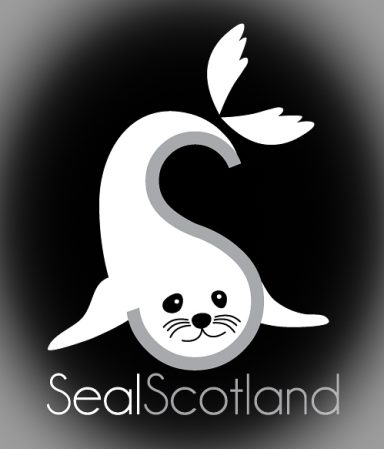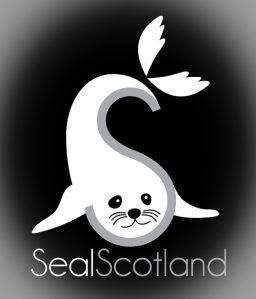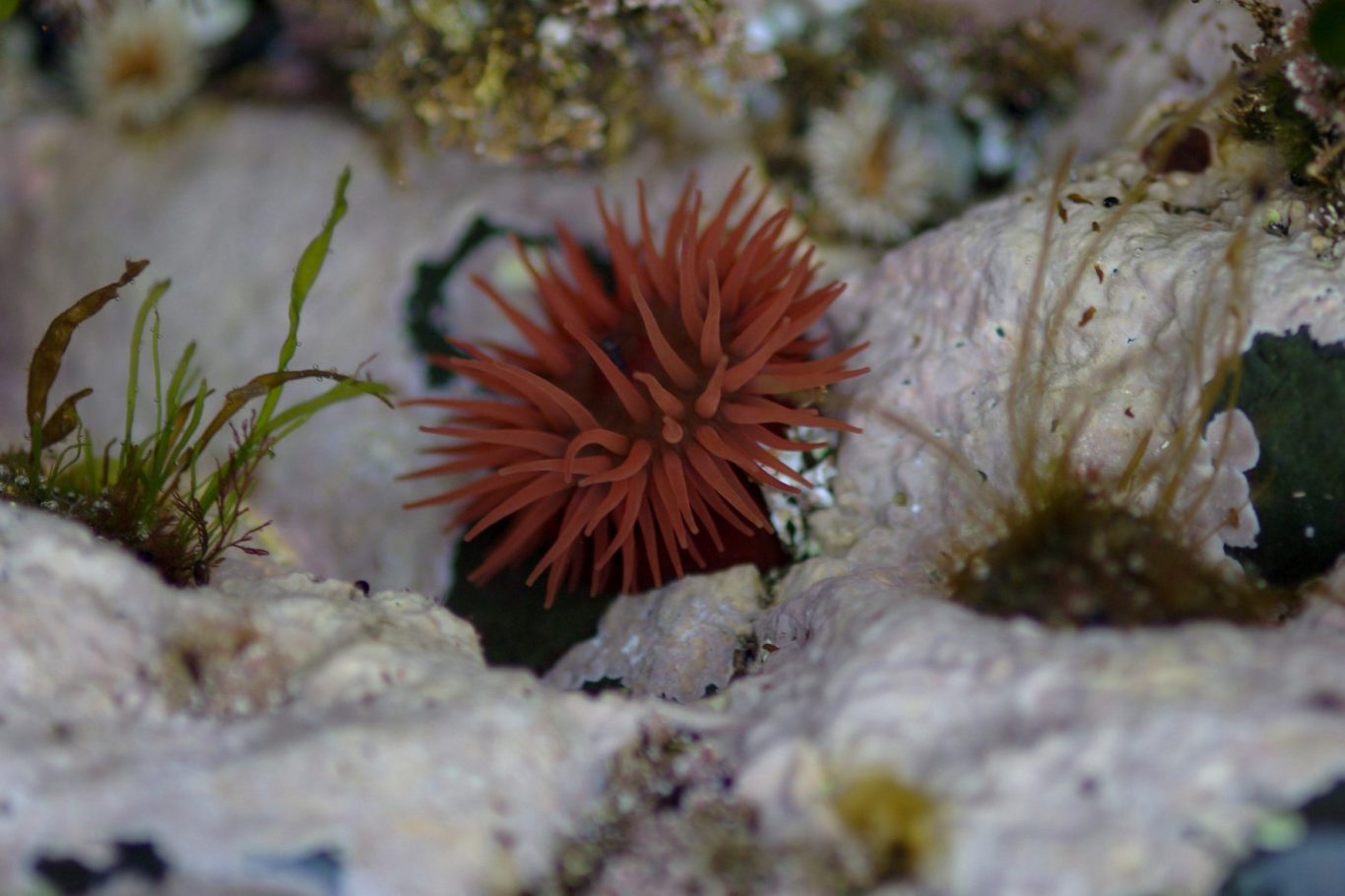
The Little Things Matter, Scottish Seas are Special; - Find Out why?
Great Biodiversity in Scottish Seas
A combination of factors create a unique area in and around Scotland, which in turn allows for a huge amount of biodiversity and biomass around our coastline and out to the Continental Shelf.
A mixing of currents, and strong upwelling creates two phytoplankton and zooplankton blooms (Spring & Autumn), these give a 'kick-start' to the bottom of the foodweb.
Even the most basic food- web is complicated, we still do not fully understand all of the interactions which can adversely affect it. This is one of the reasons that we signed up to the "Precautionary Principle", meaning that we can/should protect, even before we have all of the facts!
Scotland is home to internationally important populations of Atlantic grey seals and the European sub-species of common or harbour seals. Cetaceans include; - Bottlenose dolphins, White-Beaked & Common dolphins, Risso's and Orca. Minke whales are relatively common. Harbour porpoise can often be seen around the Scottish coastline.
Pressures
V's
Protection
Scotland's entire marine ecosystem is under pressure from human activity, over exploitation, pollution, climate change, alien species, pathogens and much more.
This is why there have been attempts to 'protect' areas. Currently there is a Global agreement for "30 by 30", that is to 'protect' 30% of sea and land area by 2030.
That said, the term 'protect' has not been fully defined and can alter depending on who is in charge.
Terms such as Marine Protected Areas (MPAs) are used to cover a multitude of different areas. The Scottish government states that Scotland has 37% of such designations.
We have disputed this purported percentage, including through Freedom of Information (FOI).
We would suggest that Scotland's level of "real" protection, that where no damaging activities can take place is closer to 3.7%.
The recent media frenzy concerning Highly Protected Marine Areas (HPMAs), where hyped up media concern, following a campaign from the mobile fishing sector, for just 10% HPMAs caused government backtracking.
What the media failed to acknowledge is the intimidation in rural coastal locations, where local people are often left without a 'safe' voice.
During a video conference with the Minister, she said, "Maybe we should call them (MPAs) 'designated":
Really taking the;
"P" out of MPA!

"Quick shoot that seal,
its stealing
all our catch"!
From the book; - Seals by Sheila Anderson, Whittet Books.
30%
No-Take-Zones
The Royal Commission's Report, "Turning the Tide", called for 30% No-Take-Zones in 2004.
Twenty years on and Scotland still only has a few no-take-zones; Arran's Lamlash Bay being the first and probably best known.
The benefits are clear to be seen, with species spreading out into surrounding regions, but Lamlash is only one square mile. Scotland's sea area is massive, around five times larger than its landmass.
We needed 30% no-take; 20 years ago, in order to protect biodiversity and industries that rely on the sea for their very existence.
The current situation is NOT sustainable. "Sustainable", a simple term, defined in the Brundtland Report, used by the Rio (Earth) Summit in 1992: "To meet the needs of today, without compromising the needs of future generations". Yet the Scottish government uses numerous definitions, so how are we supposed to know what they mean when politicians say; "sustainable"?
MPA "Protection" Under the Scottish government
This Google Earth image shows the Lismore SAC, designated for Common Seals. The round floating structures are salmon farm cages, feed barges and a diesel generator. The floating generator is just 20m from the haul-out.
38 seals were shot here in two days by a contractor for the salmon farm. During our counts we never saw any seals on this haul-out while the salmon farm was in operation.
This is an example of the "protection" offered by the Scottish government; - Marine Directorate, NatureScot and politicians in MPAs.
Nature Scot recorded seal counts here higher than the official Sea Mammal Research Unit (SMRU). It was later found that they included seals that were not in the SAC. As a result we conducted our own counts which returned similar to SMRU.
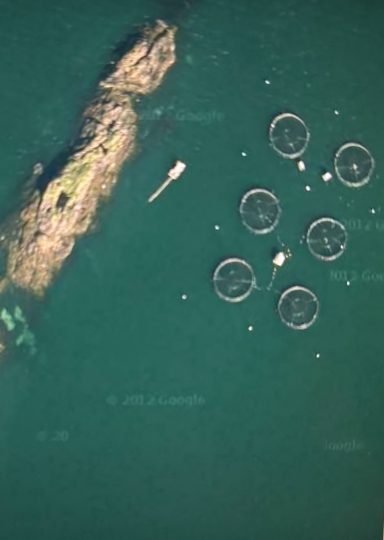

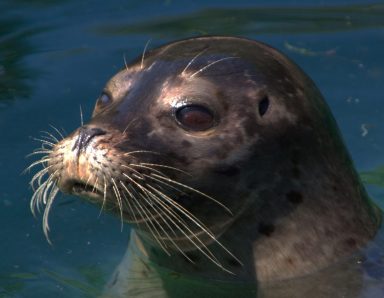
Did you know?
Animals that 'porpoise'.
Seals porpoise, dolphins porpoise, even whales can porpoise.
It is not often that you see a porpoise, - porpoise;
so why call it "porpoising"? Perhaps this seal, seen porpoising, was performing for the ladies hauled-out on the rocks.
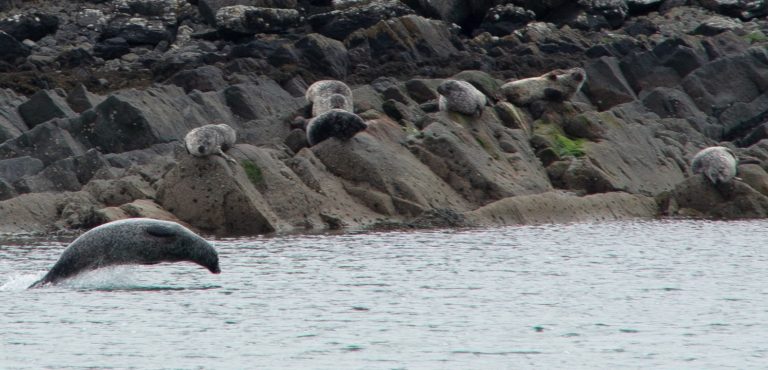
We need your consent to load the translations
We use a third-party service to translate the website content that may collect data about your activity. Please review the details and accept the service to view the translations.
